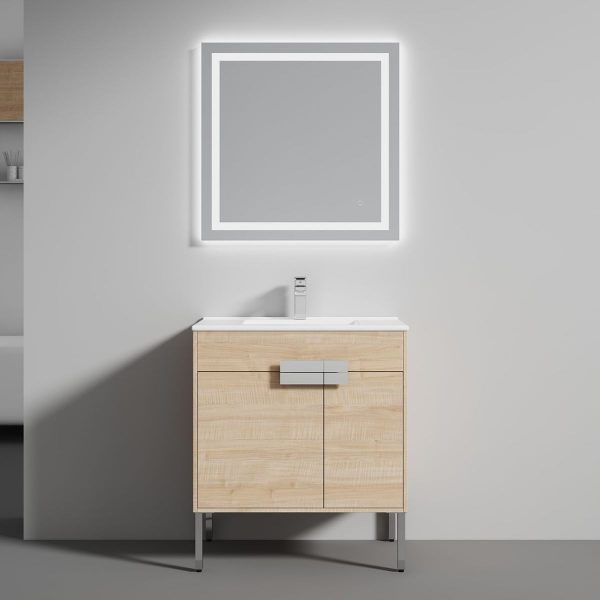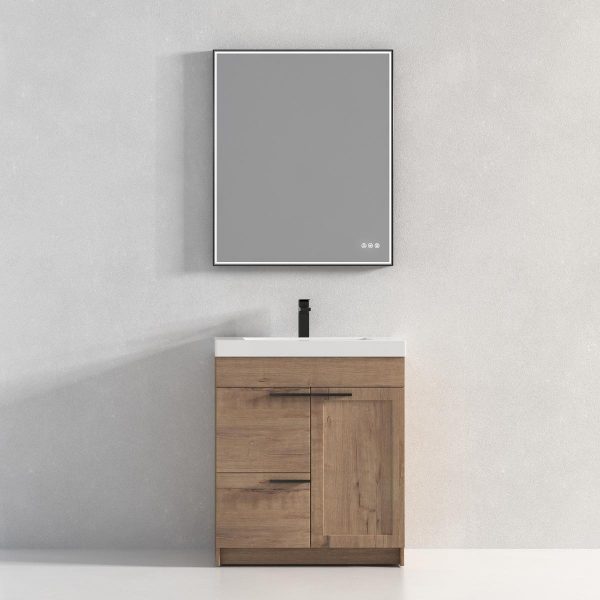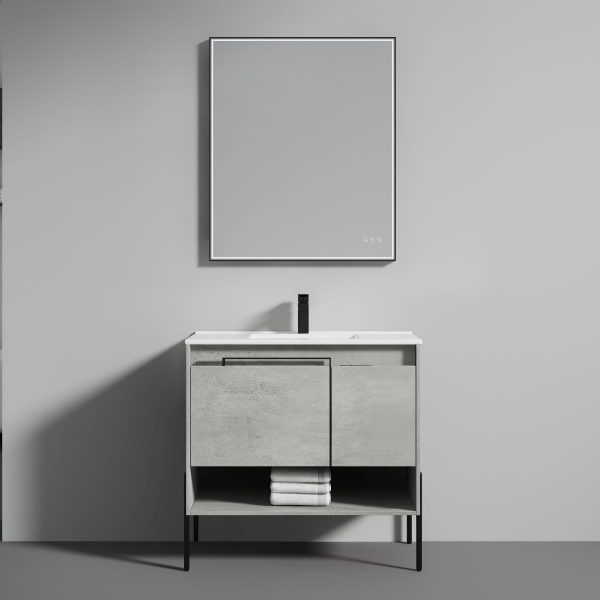As you get a great bathroom sink or vanity set up for your bathroom renovation or new home, you’ll need a quality bathroom sink faucet to go along with everything you are trying to achieve.
With that in mind, you have to look carefully at how you’re going to install such a faucet.
You need a quality bathroom sink faucet that adds a good look to bathroom design. A well-made faucet should be something that is properly designed and is also ready to stand out.
A faucet set should be made with not only a good tap but also proper controls for hot and cold water. This is a look at some of the different kinds of bathroom faucets you can use today. These include many great options such as single-hole faucets, single handle faucets, faucets with spray heads, centerset faucets, and wall-mounted faucets, as well as the faucet finish such as a chrome finish, stainless steel, or satin nickel. They are sensible for a variety of bathrooms including your primary bathroom. Some have a few more unique and noteworthy designs.
Types of Bathroom Faucets
1. Center Set
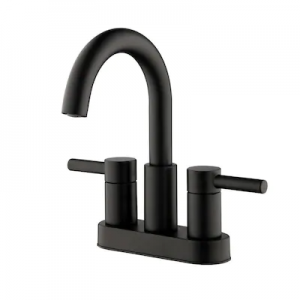
A center set faucet is one of the more common types of bathroom faucets you can order. This features a small body that offers a series of hot and cold water controls. The great design features a comfortable look. It is typically made with just one single body piece in mind.
2. Single Handle
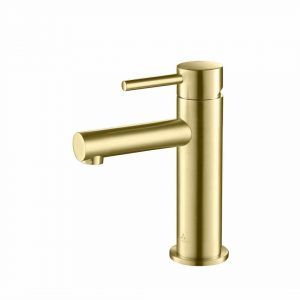
A single handle faucet is exactly what its name suggests. It is a faucet that uses just one handle. This can be positioned to the left or right to adjust the temperature of the water. The handle is typically found right behind the spout. This can come with a much smaller mounting space as it doesn’t require too much drilling to secure. It can fit in a spot that is about two or three inches wide.
3. Spread Fit

A spread fit faucet uses three separate pieces that stick out from the surface of your sink. These are the main spout and the hot and cold water controls. The design of such a faucet establishes a comfortable look that adds a bit of class that is refined and allows for a bit of a refined look.
4. Bridge
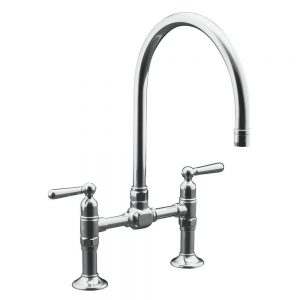
A bridge faucet is made with a tap that is situated up over the surface of your sink. It works with two separate water controls for hot and cold water. Those two controls are mounted to the surface while the spout is right in the middle. This is named for how it establishes a beautiful bridge-like design. It is a classic type of faucet.
5. Wall-Mounted
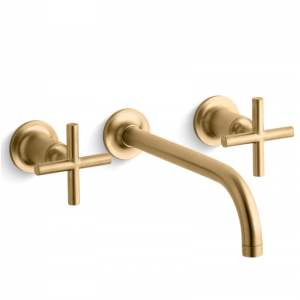
Depending on how our bathroom is organized, you might be able to get a wall-mounted faucet ready. This works when your plumbing fixtures are secured to the walls of your property. It is designed with floating sinks in mind although it could fit anywhere you wanted it to as well.
This kind of fixture can be attached right above your sink basin. It has to protrude by a few inches so the water can actually get into the basin. You should use this if your plumbing fixtures are organized around the walls although you could have such fixtures reorganized depending on your needs.
6. Sprinkle
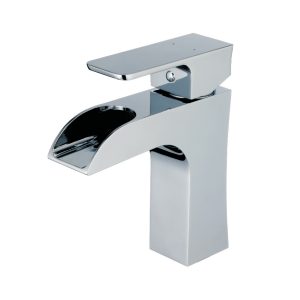
A sprinkle sink faucet uses a unique type of spout. Instead of the traditional cylindrical spout, it uses a setup where the water comes out in a rectangular pattern. A small series of borders will go to the sides of the spout where the flat body in the middle allows the water to flow out gently into the sink basin although a cover may go around the entire surface of the spout. This establishes a unique appearance.
Materials
1. Brass

Brass is a very popular material for how it combines copper and zinc into an alloy. It offers a shiny yellow tone. Copper is a popular antimicrobial agent although it is not fully clear as to how it works with that in mind.
Aluminum may be added into the brass to make it stronger and capable of resisting corrosion. Tin materials can also be added to prevent dezincification, a process where brass loses its zinc properties as it is exposed to water.
2. Stainless Steel
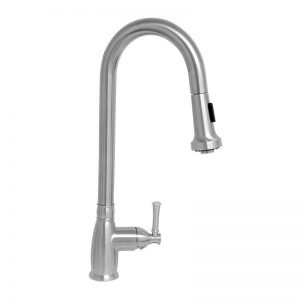
Stainless steel materials can add a classy look to your faucet when used right. It is harder than brass and features nickel and chromium to create a shiny silver-like tone. This can be rather hard in texture and will not dent or wear out easily. It can display stains quickly so make sure you wash it regularly if you plan on going with this option.
3. Zinc
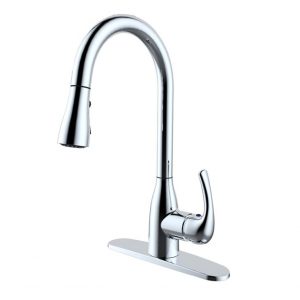
Zinc is another good choice to have for your needs. Zinc has long been used as a replacement to brass because it is not as expensive. It typically has a dull gray color but it can be plated over with a chrome design to make it attractive.
Zinc is light in weight and can resist corrosion quite well. You’d have to check carefully on how well the zinc in your faucet works so you’ll have an easier time with getting it organized well enough.
4. Plastic

Plastic is often used in many faucets for how it is cheap and easy to install. Some forms of plastic do better than others though. Polyethylene is a better option for how it uses cross-linked fibers to create a sturdy body that does not wear out. It is not as likely to chip away and get into your water supply either. You can even order a faucet that features a fancy design that includes a series of fake crystal accents on the control knobs among other prominent features.
Still, plastic is typically the last option that you would normally want to consider for a bathroom faucet. It is easy to break and might be too unappealing and casual in its appearance when compared with everything else you’ve got in your bathroom faucet arrangement.
Size
The size of your faucet should be checked carefully based on how you are getting it installed and what it will feature. Expect to take about 6 to 8 inches for the entire design of your faucet.
When using a faucet with a singular plate, you will need about 6 inches of room for it. This is to keep the entire plate intact.
For anything that uses separate parts, expect to take about 3 to 4 inches in between each item. This includes 3 to 4 inches in between the cold water control and the main spout, for instance. This measurement is relative to how far apart cold and hot water lines are typically located from each other.
In terms of the length of your faucet, it should be about 12 to 16 inches long. It needs to come out far enough over the main body of the sink basin so it can actually stay functional.
You should not assume that the size of your bathroom or its organization will make an impact on your faucet. The faucet should be chosen independently of the size of your space.
Cost
The cost of your faucet set will be based on three factors:
- Where you are installing it
- Its general size and arrangement
- The materials used to make it
In most cases, you can spend around $100 to $200 for a more traditional type of faucet. But that total is the minimum when you consider the other features that can be added to your faucet.
A bridge faucet will cost more than most others. It can go for about $200 to $300 due to the elaborate design that comes with such an attractive faucet. It may also cost the same for a spread fit faucet due to the added cutting needed to get such a faucet established as well as the added effort needed to get the system wired properly and quickly.
The cost of a wall-mounted option might be even higher. In addition to paying about $200 or more for a wall-mounted faucet, you would also have to spend extra on wiring the plumbing features around your bathroom so the new faucet can actually be supported. Depending on the effort, you might have to spend a few hundred extra dollars to make this part of the faucet work right.
The materials used in the construction of your faucet can also add to its value. Brass faucets often cost $300 or more dollars.
Don’t forget about the labor costs involved. It can cost about $200 to hire someone to spend about two hours to get it installed. Added costs may also be incurred if you have a faucet that requires you to either cut around your bathroom counter or vanity or if you need to wire some of your plumbing features just to make it all work.
Added Features to Consider
Your bathroom faucet can include the following features to make it useful:
- A stopper should be used with a lever or a pull that can be triggered to close up the sink. This is to keep water from draining as needed.
- You can always add a soap dispenser to go next to your sink. Try and find something that uses a similar finish and physical design. Make sure it is placed far apart from the other features in your setup too.
- You can also order a bathroom faucet that features a flexible head. This means that it could be pulled out from the base like what you get out of a kitchen sink faucet. This is made particularly for cases where you need to wash off a shaving razor or toothbrush among other items.

